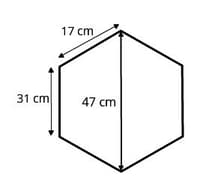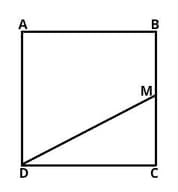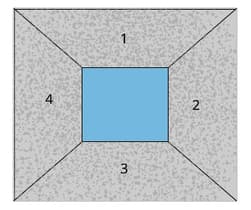Area of Trapezium
Area of Trapezium: Overview
This topic explains that a trapezium is a quadrilateral in which a pair of sides is parallel but the other pair of opposite sides are non-parallel. The area of a trapezium is equal to product 12 and the sum of parallel sides and distance between them.
Important Questions on Area of Trapezium
Derive area of trapezium formulae using a triangle.
Find the area of a trapezium whose bases are and and whose height is .
Derive formula for area of trapezium by transforming it into a triangle. Then, find area of the trapezium shown.
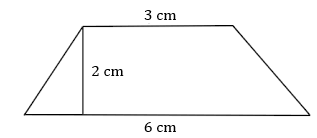
Derive formula for area of trapezium by transforming it into a triangle. Then, find the sum of parallel sides if area and the height are respectively.
Derive formula for area of trapezium by transforming it into a triangle. Then, find the height if area and the sum of parallel sides are respectively.
Find formula for area of given trapezium by triangulation. Then find the height, if the area and sum of parallel sides are respectively.
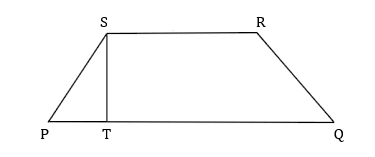
Find formula for area of given trapezium by triangulation. Then find its sum of parallel sides if area and height are respectively.
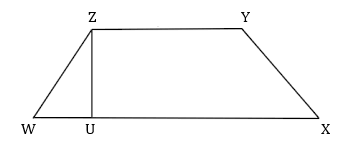
Find formula for area of given trapezium by triangulation.
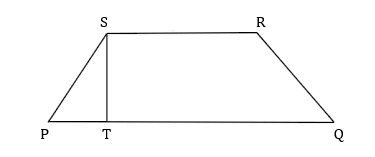
Derive formula for area of trapezium by transforming it into a triangle. Then find the area of trapezium shown.
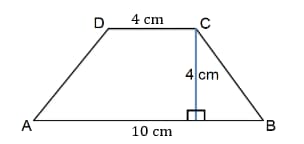
Derive formula for area of trapezium by transforming it into a triangle.
Find formula for area of trapezium by triangulation and, then find area of trapezium given below.
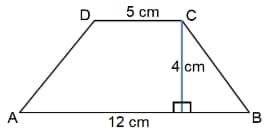
Find formula for area of trapezium by triangulation.
The sum total of the area of 2 trapeziums is
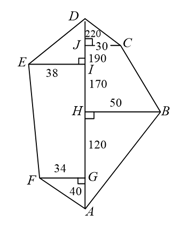
What is the area of the trapezium portion C?

If the values of perimeter and sum of lengths of the parallel sides of an isosceles
trapezium are given, can we find the length of the other two sides?
Mason Nagaraj measured the distance around a trapezoidal plot and found it to be 203ft. What is this measurement known as?
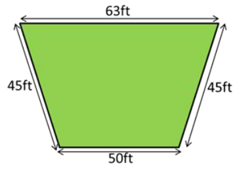
Two symmetrical trapeziums are joined together to form aboard which is in the shape of a hexagon. The area of the board is _____$ \text{c}{m}^{2}$.
ABCD is a square of side 6 cm. If M is the mid-point of BC, area of ABMD $ =$_____$ \text{c}{m}^{2}$.
There is a 12 ft by 12 ft fountain in the middle of a 30 ft by 30 ft square ground. The fountain is surrounded by 4 seating ledges as shown in the figure above.
The area of each of the seating ledge is _____$ \text{f}{t}^{2}$.
The area of a trapezium is 312 $ {m}^{2}$and its height is 6 m. If the difference between 2 of its lengths of the parallel sides is 12 m, the longer parallel side is _____m.

